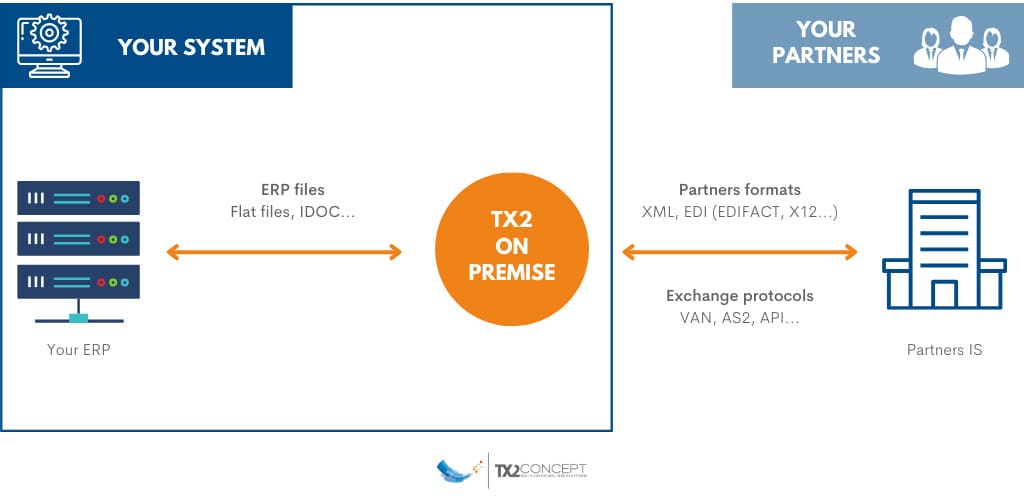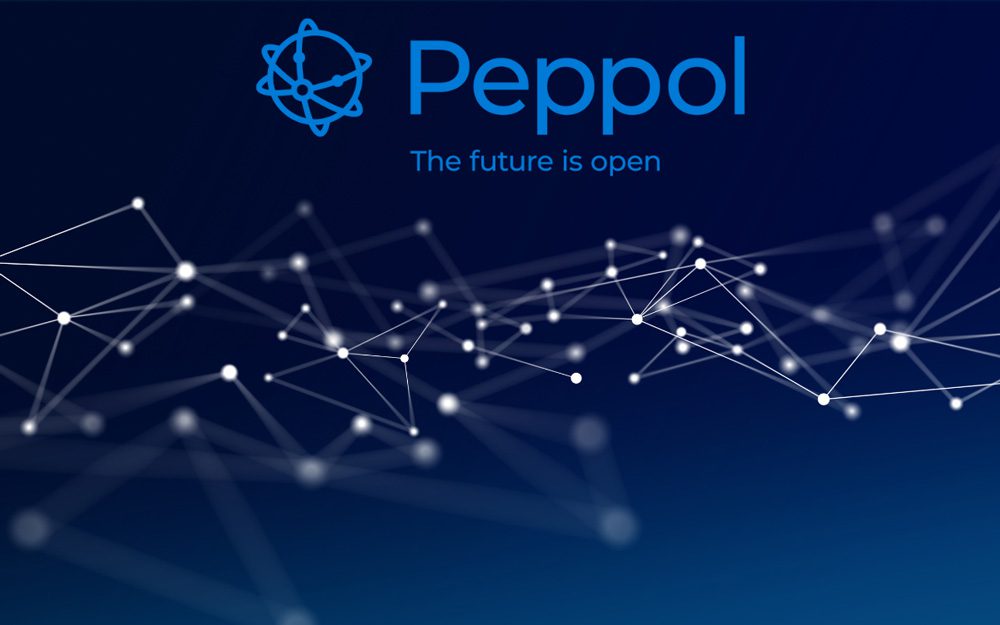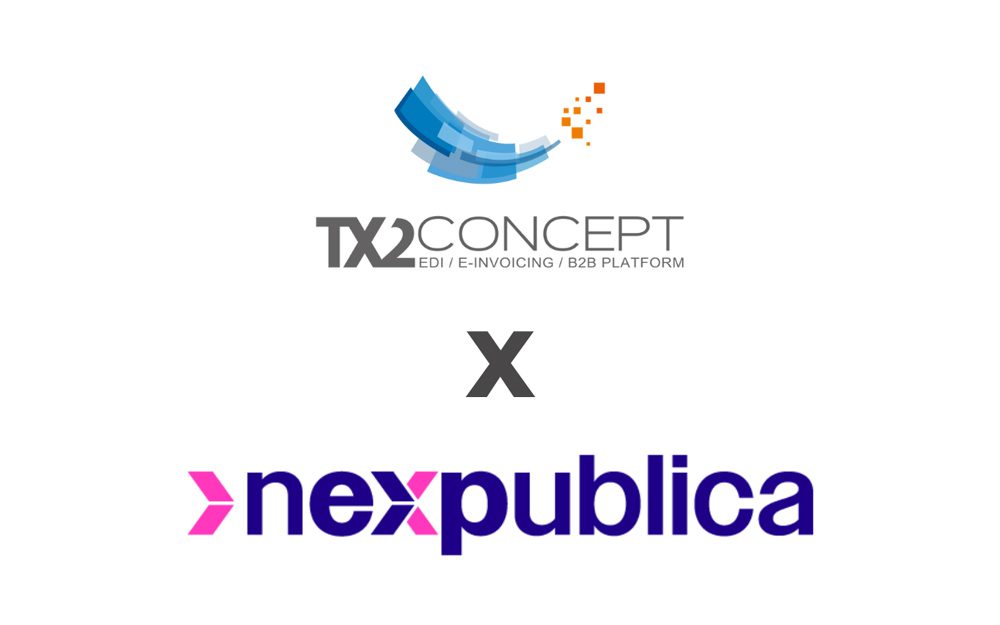You need to dematerialize your trade and logistics flows with your partners? TX2 CONCEPT can support you whatever your profile and your needs are, with an adapted solution.
In this article, we will show you three possible solutions, how they work and their advantages. This article should help you determine the best solution for your needs. We are of course available to answer all your questions and to provide you more information.
Your system in Web EDI
To begin with, the easiest and most economical solution to set up is Web EDI. Let’s see what it is and who it is for.
What is the concept of Web EDI?
Web EDI is a solution that allows you to switch to EDI easily, quickly and inexpensively. It allows you to exchange a set of documents with your partners. For example, as suppliers, you can receive your customers orders via EDI.
This solution facilitates the use of EDI thanks to a secure web interface that allows you to easily manage the exchange of your business, logistical and administrative documents with your partners. You can send and receive EDI messages, without needing to integrate them into a management software (ERP). This helps to reduce the implementation cost of the solution.
You just need to log into the platform and fill in your data via forms. The information you provide on deliveries, invoices or other, are then sent to your customer directly into their management software (ERP) in the appropriate EDI standard. The translation and sending of your messages in standard format (EDIFACT, ODETTE, GALIA, VDA …) is done automatically.
It is also possible to automate the creation of these documents from messages received on the online interface. For example, Web EDI can automate the creation of an invoice following the reception of data relating to an order.
Who is this for?
Web EDI is a solution that can mainly be used in two cases:
- You are an automotive or retail supplier and your volume of exchanged documents does not require an automatic integration into a management software (ERP), or you simply do not have one.
You probably interact with major manufacturers, contractors and / or suppliers in your industry who manage a considerable number of flows. This amount of data can no longer be managed manually, which is why these major players, such as Renault, Peugeot or Faurecia in the automotive industry or Auchan, Carrefour and the Casino Group in mass distribution, have turned to EDI. Therefore, to communicate with these actors, it is necessary to be able to exchange EDI messages in the appropriate standard.
- You are a structured supplier but you need to temporarily increase your EDI capacities. This may be the case if you are about to integrate new operations into your on-premises system or if you need to process unique documents.
What are the advantages of Web EDI?
If your profile corresponds to one of the situations we have just explained, then Web EDI has many advantages for you.
First of all, it’s an economical solution because installation and operating costs are reduced compared to other EDI systems. Then, this system is easy to use. That is, no computer skills are necessary to be able to use it.
This online platform allows you to make your document exchanges more reliable and thus reduce the number of disputes. The translation of documents being automatic, you save time which allows you to concentrate on tasks with higher added value.
Depending on the importance and nature of your needs, Web EDI may not be the best solution. In this case, it is necessary to turn to a more automated EDI system such as hosted EDI or licensed EDI. Let’s see this together.
Your integrated EDI system
Web EDI requires you to manually enter your data. When your volume of exchanged documents exceeds a certain threshold, this task can become time-consuming. Your employees then lose time when they could dedicate themselves to tasks with higher added value. In addition, manual processing can lead to data entry errors.
As you can see, if your volume of exchanged documents is significant, an integrated EDI solution will be more relevant.
Basically, the goal is to link your management software with the one of your partners. This implementation is possible regardless of your ERP: Sage, SAP, Silverprod AX, Abas, WaveSoft, Microsoft AX Dynamics, JD Edwards, OBILOG … This allows you to automate the processing of your documents in sending and receiving, all in real time.
To switch to the integrated EDI, two solutions are possible: the hosted mode and the licensed mode.
EDI in hosting
Hosted or SaaS mode allows you to exchange your data with your partners through a simple Internet connection. This solution is based on a cloud system. You benefit from all the functionalities of an EDI system and we ensure the operation, maintenance, monitoring and all technical relations with your partners.
Our TX2 Business Linked® platform takes care of the translation of messages according to the EDI standards in force in your activity sector (GENCOD, EDIFACT, EANCOM, GALIA, ODETTE, VDA, ANSI X12, INOVERT, etc.). To learn more about the main EDI standards, you can read our latest article.
You can exchange EDI messages such as DELFOR, DELINS, ORDERS, DESADV, RECADV, INVOIC or even KANBAN, for example. The Saas EDI allows you to automatically manage the sending and receiving of your business documents in full integration with your information system.
Licensed EDI
Unlike hosting EDI, if you opt for licensed EDI you must install the solution in your infrastructure. This operating mode is also called EDI in station.
Our TX2 EDI ON PREMISE offer is a set of modular solutions that allow you to exchange dematerialized documents directly from your applications, such as ERP, to your various partners. It can consist of the translator, various communication software or automation software.
Here is how to schematize the EDI in license:

You manage your EDI flows in total autonomy while benefiting from support provided by our experts.
You now know the main differences between hosted, licensed EDI and Web EDI. If you would like to learn more about our solutions, please feel free to leave us a comment or contact us directly. We will be happy to advise you and support you in your project.

